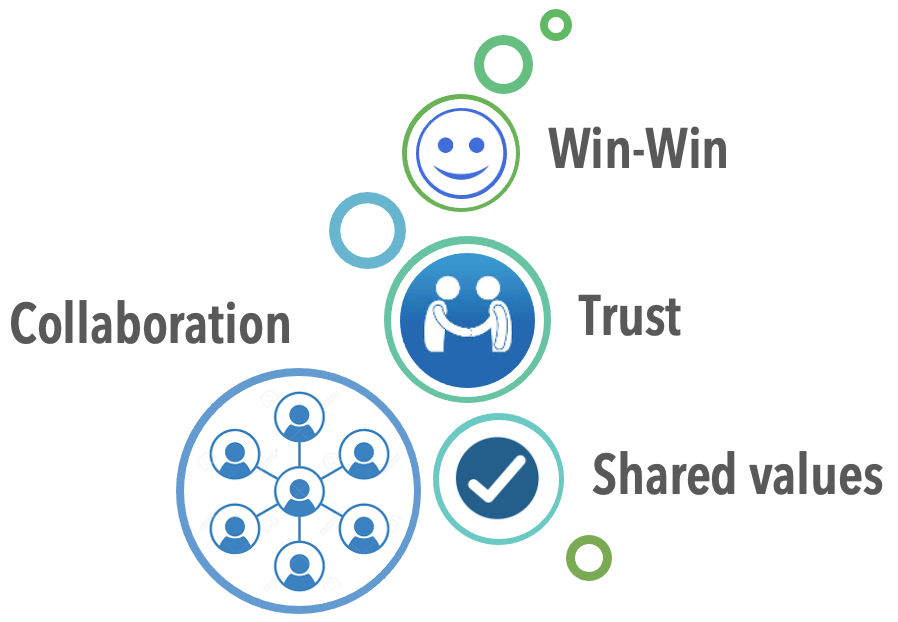Open innovation is crucial in today’s technology driven industry. The traditional fixed set of few partners and long-term collaborations is shifting towards a broader range of diverse partnerships, each adding value to your ecosystem: user groups, competitors, vendors, trade associations, open-source initiatives, etc. Partnerships can be very fluid and change shape over time, from mass collaboration over open-source initiatives to hackathons.
Opening your organisation to the external world and mining expertise, knowledge, and innovation is a daunting task that has to be well prepared for in order to protect your IP and assets, as collaborations inherently work in a reciprocal manner.
The global and interconnected economy allows for scanning beyond regional boundaries and enables the exploitation of opportunities worldwide. It offers new opportunities that are otherwise left unexploited and even unknown. Increased specialisation, new revenue-sharing models, and faster time-to-market are all benefits that can result from these partnerships. By moving up in the value chain, vendors account for a higher degree of participation, accept a broader responsibility, and become more concerned with quality and end-to-end results.

- Begin from the organisation’s overall strategy and the missing or underdeveloped capabilities within the IT organisation to accomplish this strategy.
- Consider whether it might be opportune to engage in partnerships by adopting an open innovation approach and scanning opportunities beyond the boundaries of your organisation.
- Reflect which of the below mentioned types of partnerships can facilitate, strengthen, or speed-up capabilities:
o Competitors
o Customers
o Vendors
o Research labs and R&D organisations
o User groups and trade associations
o Open-source initiatives
o Mass collaboration and crowd sourcing - Optionally, potential partner names can be suggested next to the selected types of partnerships, although this is certainly not a must at this stage of the exercise. However, it can give participants a better idea of who could be potential partners and require further analysis.
- Finally, link the suggested partnerships with the objectives and discuss how these can contribute to the set goals.
Jan Verbruggen
Partner XPERIAN BV
Author ‘IT Strategy Cards’ (ISBN 9-789076-353005)